
1
Share Capital
Transactions and
Financial Instrument
(IAS 32 & IAS 39)
Chapter
15

2
15.1
Issue of shares
Incorporated organisations can raise finance by issuing shares.
1
Ordinary share capital (UK)
A limited company issues shares, which investors buy and then these investors become owners of
the company. These shares may be issued privately (ltd) or to the public (plc). Ownership in the
company is through the issue of shares. The shareholders have an equity stake in the business and
have voting rights.
Usually for large organisations the shareholders do not run the business. The directors do this.
The shareholders are entitled to dividends declared by the directors. The dividends are declared at
the discretion of the directors and depend on how much profit the company has made.
Authorised share capital
This is the number of shares that the company is allowed to issue
and is stipulated in its memorandum or articles of association.
Issued share capital
This is the number of shares that the company actually issues. This
cannot exceed the authorised share capital
Called up share capital
This is the issued share capital for which the shareholders are
required to pay to the company.
Paid up share capital
This is the amount of share capital paid up by the shareholders
Nominal value
This is the value of the each share which the company will originally
issue the shares at, (also known as face or par value)
Market value
This is the trading value of the shares, and is the price an individual
pays for the shares
Share premium
This is the increase from nominal value to market value of the share
The double entry to record issue of ordinary share capital is:
Debit
Bank (statement of financial position)
Credit Ordinary share capital – nominal value(statement of financial position)
Credit Share premium (issue value less nominal value)
(statement of financial position)
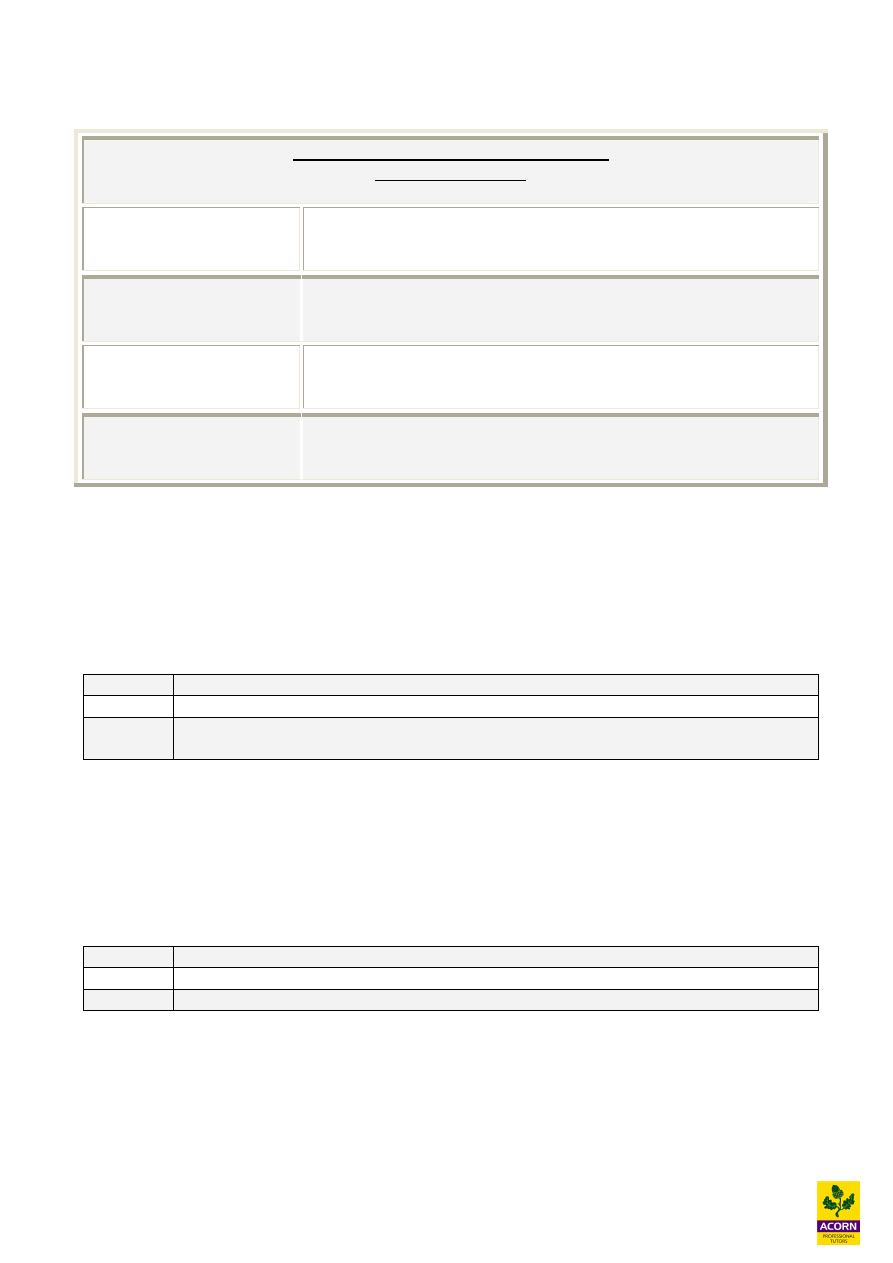
3
Procedures for new issue of equity shares
Issue and forfeiture
Application
Potential shareholders apply for shares in the company and send
cash to cover the amount applied for.
Allotment
The company allocates shares to the successful applicants and
returns cash to unsuccessful applicants.
Call
Where purchase price is payable in instalments, the company will
‘call’ for instalments on their due dates of payment
Forfeiture
If shareholders fail to pay a call, their shares may be forfeited
without the need to return the money they have paid; the forfeited
shares may then be reissued to other shareholders
2
Rights issue of ordinary shares
If a company issues ordinary shares for cash it must first offer them to its existing ordinary
shareholders in proportion to their shareholdings. This is called a rights issue because members
may obtain new shares in right of their existing holdings.
Double entry to record issue of ordinary share capital under a rights issue:
Debit
Bank (statement of financial position)
Credit Ordinary share capital – nominal value(statement of financial position)
Credit Share premium (rights issue price less nominal value)
(statement of financial position)
3
Bonus issue of ordinary shares
A bonus issue is when new shares are issued to existing shareholders but no money is received.
Instead the company capitalises its reserves, this is only permitted to the extent that the articles
permit it and the correct procedure must be observed.
Double entry to record issue of ordinary share capital under a bonus issue:
Debit
Share premium (to its extent) - (statement of financial position)
Debit
Distributable profit (remainder) - (statement of financial position)
Credit Ordinary share capital (nominal value) - (statement of financial position)

4
4
Preference shares
Preference shares are issued by companies to raise finance. These shares are different from
ordinary shares. Preference shares do not give voting rights and therefore holders of preference
shares do not have a stake in the business.
Preference shares usually carry a fixed dividend. This means the company has to pay dividends on
the preference shares (obligation to pay dividends if the company makes profits). The company
has the option to pay dividends on ordinary shares (no obligation).
Direct issue costs of all share issues are never treated as an expense, but instead are debited to the
share premium (i.e. the direct costs of raising capital finance is capitalised).
15.2
Reserves
Revenue reserves arise when a company makes profits and does not pay out all the profits to the
shareholders. There is no statutory requirement for a company to have any amounts in its revenue
reserve. These non-statutory reserves take various names like “retained profits”, “profit and loss
reserves”, “un-appropriated profits” etc.
A company can make dividend payments out of revenue reserves i.e. they are distributable to the
shareholders
Capital reserves must be established in certain circumstances by law. These statutory reserves
include:
§ Share premium account (set up when ordinary shares issued)
§ Revaluation reserve (set up when fixed assets revalued)
A company cannot make dividend payments out of capital reserves, i.e. they are un-distributable
Reserves
Statutory
(capital)
Non-statutory
(revenue)
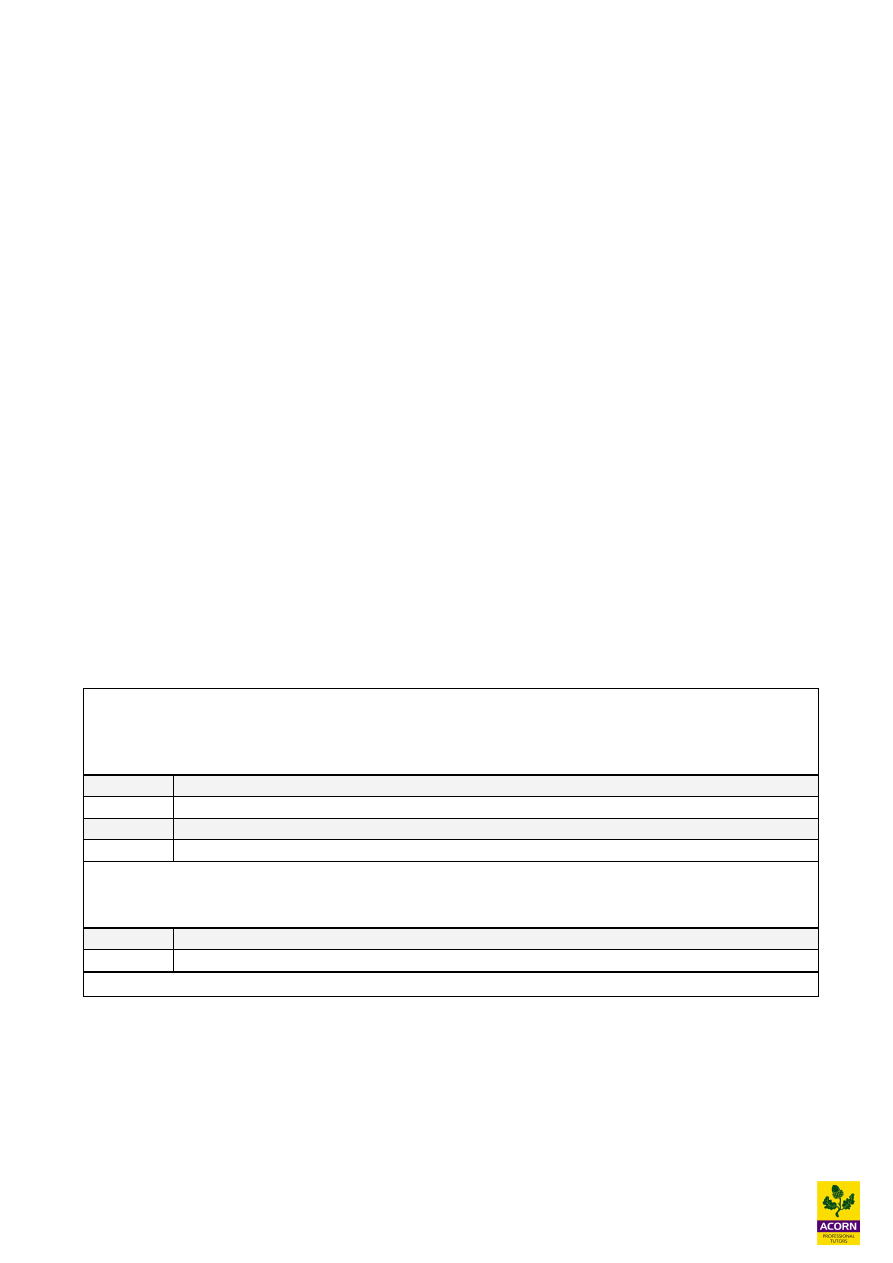
5
15.3
Distributable profits
Distribution to shareholders can only be made out of distributable profits. This is the law.
Distributable profits are realised profits, for example profits earned on sale of goods or returns
from investments. Unrealised profits or gains include revaluation of non current assets. This
revaluation gain is not realised because the organisation hasn’t sold the asset, it is still continuing
to use it.
All accumulated profits are distributable profits.
The reason for making distribution to shareholders only from distributable profits is to safeguard
the rights of creditors. Any amounts owing to creditors must be paid first before capital is returned
to the shareholders, this is also known as the “creditors’ buffer”.
15.4
Redemption of shares
A company may decide to buy back some of its issued ordinary shares and then cancel them. For
this to happen, their must be authorisation from articles of association, special resolutions and
sometimes from the court.
Redemption of shares from capital
The accounting treatment for the redemption of shares is strict. A company must set up a “capital
redemption reserve” to protect the creditors. This is done by utilising the accumulated realised
profits (distributable reserves). The amount taken to the capital redemption reserve is the nominal
value of the shares redeemed.
Journal entry for redemption of shares is done in 2 stages:
1
To record the share-buy back
Debit
Ordinary share capital (nominal value) - (statement of financial position)
Debit
Share premium (but restricted) - (statement of financial position)
Debit
Retained profits (with remainder) - (statement of financial position)
Credit Bank (statement of financial position)
2
To record the capital maintenance by setting up a capital redemption reserve
Debit
Retained profits (nominal value) - (statement of financial position)
Credit Capital redemption reserve - (statement of financial position)
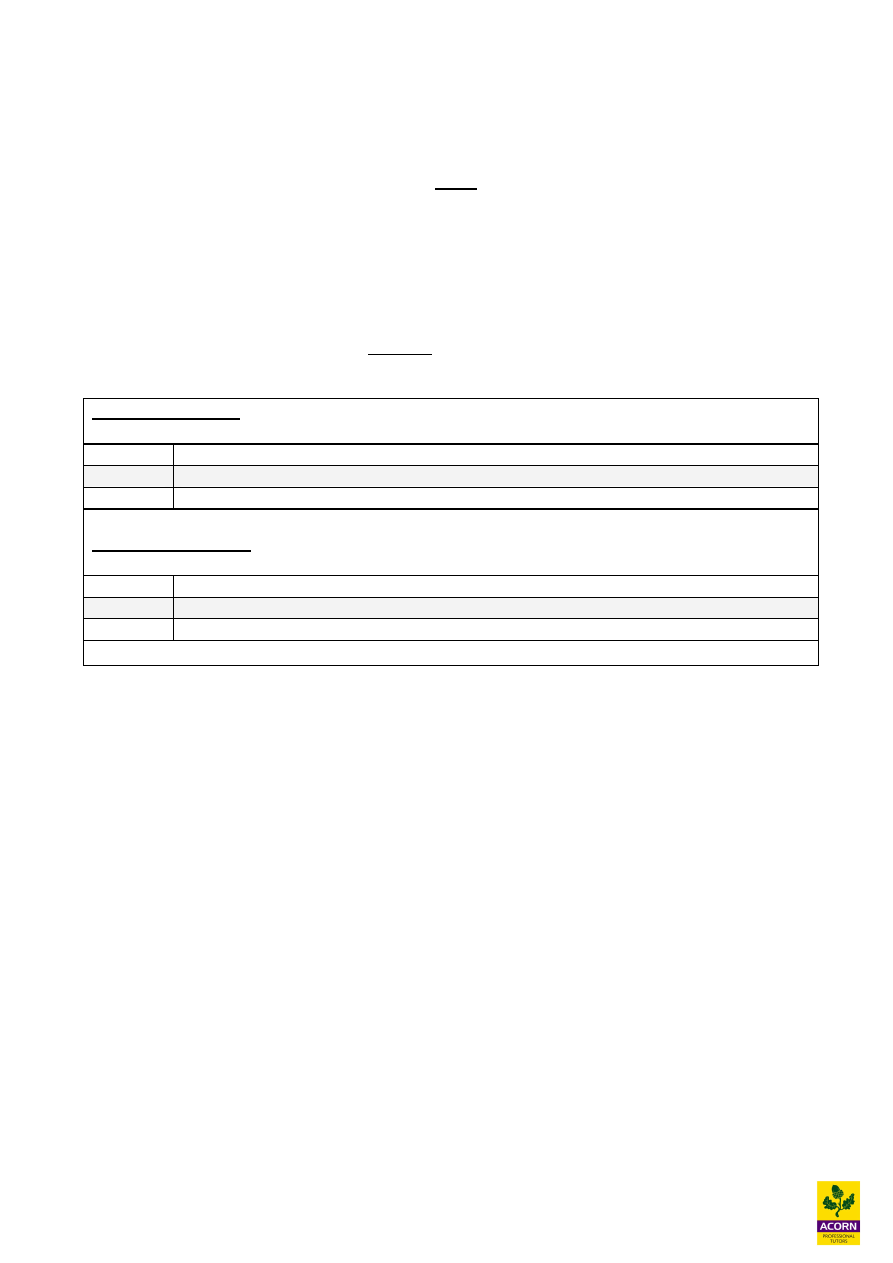
6
The rule on share premium account
When the shares are redeemed at a premium, the excess redemption value is debited to the share
premium account but the amount debited is the lower of:
(i)
Share premium originally received from the issue
(ii)
Current balance of the share premium account
(iii)
Actual premium on redemption
Redemption of shares out of new issue of shares
If the redemption of share is financed entirely by a new issue of shares, then no capital redemption
reserve is set up as the capital is maintained.
New issue of shares
Debit
Bank - (statement of financial position)
Credit Ordinary share capital - (statement of financial position)
Credit Share premium - (statement of financial position)
Redemption of share
Debit
Ordinary share capital - (statement of financial position)
Debit
Share premium - (statement of financial position)
Credit Bank (statement of financial position)
Redemption of share out of partial new issue
If the redemption of shares is financed partly by a new issue of shares, then the amount of offset
against the new issue is also partial. A capital redemption reserve needs to be created but only to
the extent that the nominal value of shares redeemed exceed the total proceeds from the new issue
(nominal plus premium).
Note that the rules also apply to preference shares.

7
Worked example
The following are extracts from Sebastian plc’s statement of financial position.
Equity and reserves
$’000
Ordinary share capital ($1 equity shares fully paid up)
8,000
Share premium
2,000
Retained profits
5,000
The company buys back 2 million shares for $1.30. The shares were originally issued at a price of
$1.25.
Scenario 1
Redemption through capital
The total value of share buy back is 2 million shares x $1.30 = $2.6 million, of which $2 million is
nominal value and $600,000 is share premium.
But only $500,000 can be used from the share premium (original share premium was $0.25 x 2
million shares), the rest will be taken from retained profits
The accounting entry is:
Debit Ordinary share capital
$2,000,000
Debit Share premium
$ 500,000
Debit Retained profits
$ 100,000
Credit
Bank
$2,600,000
An amount equal to the nominal value of the shares redeemed will be credited to the capital
redemption reserve from retained profits.
Credit
Capital redemption reserve
$2,000,000
Debit
Retained profits
$2,000,000
The total amount of retained profits utilised = $2,100,000
Statement of financial position after redemption of shares
Equity and reserves
$’000
Ordinary share capital ($1 equity shares fully paid up)
6,000
Share premium
1,500
Capital redemption reserve
2,000
Retained profits
2,900

8
Scenario 2 – Redemption through issue of new shares
The company issues 1.5 million new shares at a price of $1.00 each.
New issue of shares
Debit Bank
$1,500,000
Credit Ordinary share capital
$1,500,000
Redemption of shares
Debit Ordinary share capital
$2,000,000
Debit Share premium
$ 500,000
Debit Retained profits
$ 100,000
Credit
Bank
$2,600,000
A capital redemption reserve needs to be created but only to the extent that the nominal value of
shares redeemed exceed the total proceeds from the new issue (nominal plus premium).
$2 million - $1.5 million = $0.5 million
Debit Retained profits
$500,000
Credit Capital redemption reserve
$500,000
The total amount of retained profits utilised = $600,000
Statement of financial position after redemption of shares
Equity and reserves
$’000
Ordinary share capital ($1 equity shares fully paid up)
7,500
Share premium
1,500
Capital redemption reserve
500
Retained profits
4,400
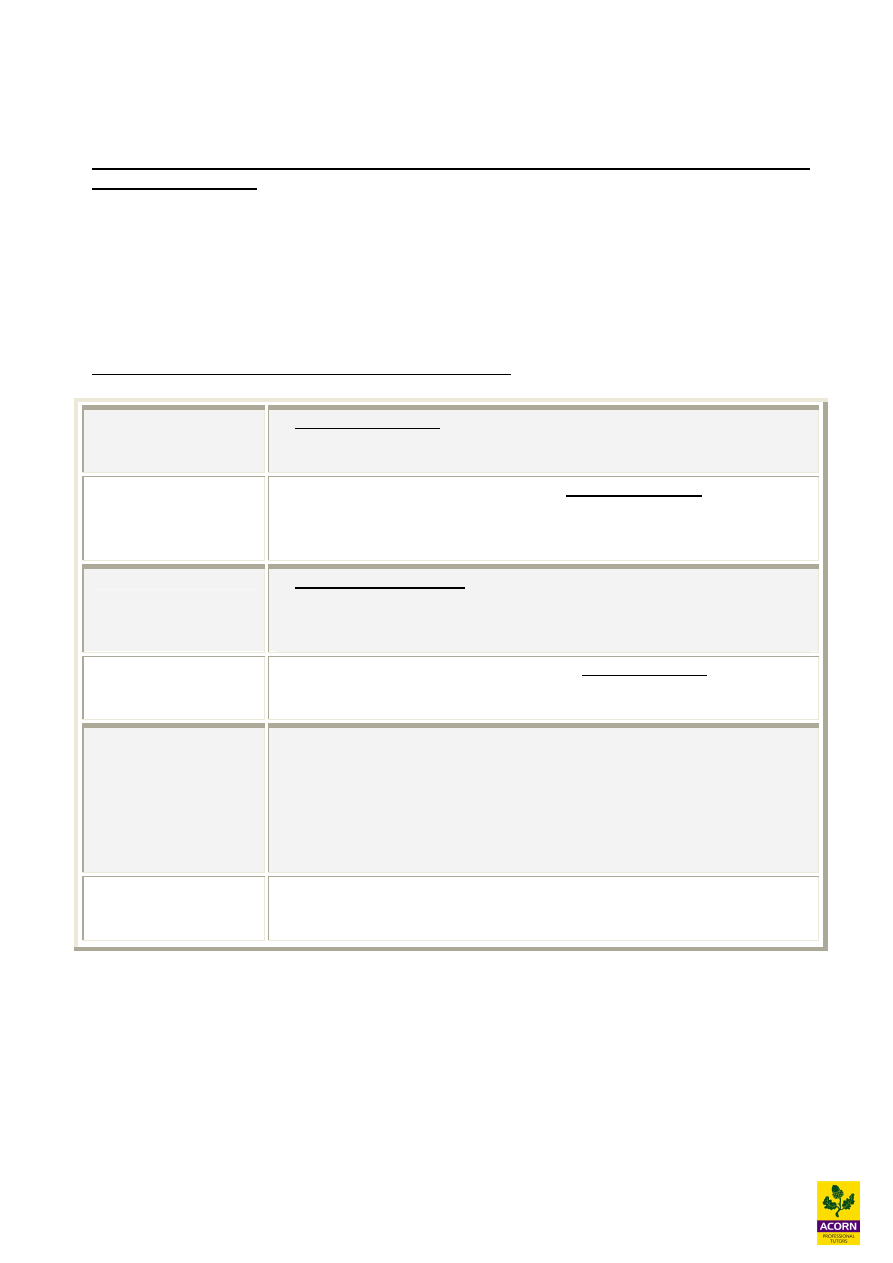
9
15.5
IAS 32 and IAS 39 – financial instruments
(Tutor note: IAS 32 and IAS 39 are not examinable in this paper, this is additional reading for
better understanding).
Financial instruments
Financial instruments are all instruments that are issued by companies as a means of raising finance
(capital) including shares, debentures, loans, debt instruments, options and warrants that give the
holder the right to subscribe for or obtain capital instruments. It also includes derivative
instruments such as options and futures.
Definitions according to the relevant accounting standards
Financial instrument A financial instrument gives rise to both a financial asset of one company
and a financial liability or equity instrument of another entity.
Financial asset
A financial asset can be cash, equity or contractual right to receive cash
or exchange financial instrument in the company’s favour. This also
includes derivatives.
Financial liability
A contractual obligation to make payments in the future. This could be
cash or exchange financial instrument which are not in the company’s
favour
Equity instrument
Any contract that gives entitlement to the residual interest in a company
after all the liabilities have been settled
Derivatives
These are financial instruments that derive their value from the
underlying asset. They are used mainly for hedging against adverse
movements in prices, exchange rates and interest rates. Examples
include future contracts, forward contracts, options and swaps. There is
usually very little outlay on investment initially and are settled at a future
date.
Fair value
The amount for which an asset could be exchanged or a liability settled,
at an arm's length transaction between willing parties
.
The accounting standards that deal with financial instruments are:
(i)
IAS 32 financial instruments - presentation
(ii)
IAS 39 financial instruments - recognition and measurement
(iii)
IFRS 7 financial instruments - disclosures

10
15.5.1
IAS 32 financial instruments: presentation
This accounting standard states that companies must classify financial instruments as either a
financial liability or as equity. The classification is important because it has an impact on the
appearance of the balance sheet and therefore major ratios like gearing. Gearing measures the
company’s debt capital to its equity capital and shows how risky or stable the company is. The
correct classification will enhance the financial statements for user’s of these accounts in helping
them assess the organisation’s financial position, performance and cash flows according to IAS 32.
IAS 32 achieves its objectives by:
§ Clarifying the classification of a financial instrument as either a liability or equity
§ Gives the treatment for treasury shares (a company's own repurchased shares).
§ Gives strict conditions under which assets and liabilities may be offset in the statement of
financial position
§ Additional disclosure requirements about financial instruments, including information as to
their fair values. However there is a new disclosure accounting standard IFRS 7 which is
applicable in addition to IAS 32 from January 2007.
Equity instruments
Financial liabilities
Ordinary shares
Share warrants
Some type of preference shares
Trade payables
Bonds
Loan stock
Debentures
Bank loans
Some type of preference shares
The substance of the instrument is looked when assessing what the classification is. If there is an
obligation to transfer economic benefit, then this meets the definition of a liability and therefore
must be classified as such.
Normal equity shares and debt, like bank loans, long term debentures and loan stock are straight
forward with their classification. The problem arises on unusual financial instruments which are
discussed below.
Tradable debt securities

11
1
Compound (hybrid) financial instruments
Some financial instruments have both equity and liability elements. IAS 32 requires that liability
element and equity element be identified and classified separately. An example is convertible debt
which is debt that can be converted into equity shares at some point in the future. Another example
is debt issued with detachable share purchase warrants
IAS 32 requires the liability component be calculated. This amount is then deducted from the
whole value (or fair value) of the instrument, which leaves the equity element.
Worked example – convertible bonds / debt
A company issues 400 convertible bonds on 1
st
January 20X6. The bonds were issued at par value
of $100 per bond. Interest is paid annually in arrears at 8% pa, and the bonds are redeemable at par
on 31
st
December 20X9.
The bonds can be converted into ordinary shares at 5 shares per bond any time until maturity of the
bond.
The market interest rate for similar convertible bonds is 10%.
Establishing the liability and equity component
(i)
Find present value (PV) of redeemable value
(ii)
Find present value of interest payments
(iii)
Deduct (1 + 2) from the value of proceeds now
(iv)
The result of 3 is the equity component
The liability is calculated first. This is the present value (PV) of the redeemable value plus the
present value of the interest payments. The bonds will be redeemed in 4 years time.
PV of redeemable ($100 x 400)
$40,000 x 0.683 (DF @ 10% 4yrs)
$27.320
PV of interest payments ($40,000 x 8% x 3.17 (CDF @ 10% for 4 yrs)
$10,144
Total present value
$37,464
Proceeds of bond issue ($100 x 400)
$40,000
Equity component
$ 2,536
Debit Bank $40,000
Credit Bond liability $37,464
Credit Equity
$ 2,536
The split between the liability and equity component remains the same throughout the term of the
bond. The split is made when the financial instrument is issued and doesn’t change even if market
interest rates and share prices change. Even the changes in the likelihood of conversion won’t
change the initial split
Fair value of
bond

12
2
Warrants and options
These financial instruments give the holder the right to subscribe for equity shares at some point in
the future at a specified price. A common form of remuneration for senior staff is share options.
Traditionally when share options were granted, there was no accounting entry in the financial
statements. It was only once the options were exercised that the financial statements would be
affected.
This old method would result in companies with different remuneration policies showing different
results, thus making financial statements incomparable.
IFRS 2 share based payments was introduced by the IASB, which states that when the company
offers share options or warrants, it must treat this as a financial instrument and recognise them in
the financial statements at fair value, the charge going to the income statement and the credit going
either to equity or liabilities.
3
Irredeemable debt
This is debt that is issued without a redemption date. The holder of the debt receives interest
indefinitely and will not receive back the principle amount. This is classified as liability under IAS
32, although it does have the same characteristics of equity shares, which are not redeemable. But
with irredeemable debt, there is an obligation to pay the interest. There is no obligation to pay
dividends on equity shares.
With redeemable debt, there is an obligation to pay to repay the principal amount. So therefore this
is classified as liability.
4
Preference shares
Redeemable preference shares
The issuer has the obligation to pay preference dividends and redeem the shares. This gives the
characteristic of a liability and therefore should be classified as such. However in some country’s
(like UK), preference shares have to be shown as part of equity, so for the provisions of IAS 32 to
apply, the law had to change.
Irredeemable preference shares
The preference dividends are paid indefinitely and the shares are never redeemed (just like equity
shares). If the there is an obligation to pay the preference dividends then classify as debt (liability).
If there is no obligation to pay preference dividends they are then classified as equity.
5
Interest, dividends, losses and gains
IAS 32 states that:
1
Interest, dividends, gains and losses relating to financial instruments that are classified as
financial liabilities must be recognised as income or expense in the income statement.
2
Distributions made to equity instrument holders, must be debited to equity (i.e. reduce
retained profits).
3
Transaction costs on equity instruments are also debited to equity.
4
Transaction costs on all financial instruments are capitalised (debited to the relevant item in
the statement of financial position)

13
6
Treasury shares
Treasury share are shares held by the company that issued them. A company acquires treasury
shares by buying them in the market. The cost of buying back these shares is deducted from equity.
Gains or losses are not recognised on the purchase, sale, issue, or cancellation of treasury shares.
Consideration paid or received is recognised directly in equity.
Treasury shares are commonly used in employee share (or share option) schemes. Treasury shares
do not receive dividends or rights and they cannot be used to vote at or attend company meetings.
They are shown in the statement of financial position, but they are deducted from share capital.
Treasury shares are not used in the calculation of basic EPS.
7
Offsetting
IAS 32 states financial asset and financial liability can only be offset against each other when:
§ Has a legal right to set off the amounts.
§ Intends to settle on a net basis.
§ Intends to realise the asset and settle the liability simultaneously.
15.5.2
IAS 39 financial instruments: recognition and measurement
IAS 39 deals with recognition and de-recognition, the measurement of financial instruments and
hedge accounting. IAS 39 is a very controversial accounting standard and is still under review.
IAS 39 states that initially ALL financial instruments must be stated at their fair value. This
includes financial derivatives (the main area of disapproval). This rule is different from the
recognition rule of the framework, which states that items should only be recognised if there is a
probable inflow or outflow and can be measured reliably.
The standard states that a financial asset or a financial liability must be recognised in the statement
of financial position only when the organisation becomes a party to the contractual provisions of
the instrument.
The definitions of financial instrument, financial asset and financial liability are the same as IAS
32. Examples of financial instruments within the scope of IAS 39 are:
§ Cash and cash in time deposits.
§ Loans receivable and payable.
§ Debt and equity securities. These are financial instruments from the perspectives of both the
holder and the issuer. This category includes investments in subsidiaries, associates, and
joint ventures.
§ Asset backed securities (e.g. mortgage obligations)
§ Derivatives (options, rights, warrants, futures contracts, forward contracts, and swaps).
IAS 39 does not deal with equity instruments; it only deals with financial assets and financial
liabilities. Therefore it is very important that the classification between equity and liability is done
accurately under IAS 32.

14
IAS 39 states that all financial assets and all financial liabilities must be recognised in the statement
of financial position. This includes all derivatives. In the past derivatives were not recognised in
the statement of financial position. This is because at the time the derivative financial instrument
was entered into, the consideration paid or received was immaterial. This justified non-recognition
at that time. However the value of the derivative changes due to changes in the underlying asset,
which means the derivative, has a positive (asset) or negative (liability) value.
Financial assets
IAS 39 requires financial assets to be classified in one of the following categories:
§ Financial assets at fair value through profit or loss.
§ Loans and receivables.
§ Held-to-maturity investments
§ Available-for-sale financial assets
(i)
Financial assets at fair value through profit or loss
This category has two subcategories:
§ Designated. This is a financial asset that is designated on initial recognition as one to be
measured at fair value with fair value changes in profit or loss. Any financial instrument
can have this designation except for equity instruments with no market value.
§ Held for trading. These are all derivatives (except those designated and effective hedging
instruments) and financial assets acquired or held for the purpose of selling in the short
term or for which there is a recent pattern of short-term profit taking are held for trading
(i.e. part of a portfolio).
Once a financial instrument has been designated as a financial asset at fair value through profit or
loss, it can never be re-classified.
Example: shares purchased which are quoted on the stock market and which are held for
trading purposes.
(ii)
Loans and receivables
These are non-derivative financial assets, which are not quoted in an active market, not held for
trading, and not designated on initial recognition as assets at fair value through profit or loss or as
available-for-sale. The payments tend to be fixed or determinable. An example would be loan
issued to other companies, which can be sold or exchanged before maturity date.
(iii)
Held-to-maturity investments
These are non-derivative financial assets that are held to maturity date, with fixed or determinable
payments, that do not meet the definition of loans and receivables and are not designated on initial
recognition as assets at fair value through profit or loss or as available for sale. The organisation
intends and is able to hold to maturity this financial asset. An example would be loan issued to
other companies, which will be held until maturity.
Held-to-maturity investments are measured at amortised cost. If the organisation sells held-to-
maturity investments before maturity (unless it is of insignificant amount or it’s a one off isolated
event beyond their control), then all of its other held-to-maturity investments must be reclassified
as available-for-sale for the current and next two financial reporting years. This would then mean
that re-measurement is on fair value basis and amortised cost method can no longer be used.

15
(iv)
Available-for-sale financial assets
These are financial assets that do not fit into the above categories (e.g. shares purchased which
are quoted on the stock market, but which are not held for trading purposes)
1
Initial classification
Before the financial asset or liability is recognised, it needs to be classified. Financial assets are
classified as above and financial liabilities are more straightforward to classify.
2
Initial recognition
The financial asset or financial liability must initially be recognised at FAIR VALUE less direct
transaction costs.
Fair value can be derived from:
(i)
Quoted prices
(ii)
Where there is no active market, then use valuation techniques with references to market
conditions, e.g. discounted cash flows using market discount factor.
(iii)
If none of the above 2 is possible, then fair value is cost less any impairment.
3
Subsequent measurement
Subsequent measurement depends on the initial classification. This is the area that was revised by
IAS 39 in December 2003, as before this, the standard proposed subsequent measurement to be at
fair value, which caused a great deal of backlash, as this introduced volatility to financial
statements. The standard now gives a choice.

16
IAS 39 now states that subsequent measurement can either be fair value and/or the following:
Classification of financial
instrument
Subsequent measurement
Change taken to
Financial assets at fair value
through profit or loss
Fair value
Gains and losses taken to the
income statement at each re-
measurement
Loans and receivables
Amortised cost, using the
effective
interest
rate
method, or fair value
Gains and losses taken to the
income statement at each re-
measurement
Held to maturity investments
Amortised cost, using the
effective
interest
rate
method, or fair value
Gains and losses taken to the
income statement at each re-
measurement
Available for sale financial
assets
Fair value
Gains and losses shown under
other comprehensive income
and
recognised
in
equity
(reserves). When the item is
sold or removed, the cumulative
gains or losses are reclassified
as part of the retained profit in
the statement of changes in
equity.
Amortised cost
Amortised cost is calculated using the effective interest method.
The effective interest rate is calculated by taking into consideration the life of the financial asset or
liability, all the payments and all the receipts. It is effectively a discount rate which when applied
will give the carrying value of the financial asset or liability (see the illustrative worked examples
later in this chapter).

17
Worked example - Financial assets – fair value
David plc has the following investments:
Date
Details
Market
value
31/12/X5
Market
value
on
disposal
during 20X6
Classification
July
20X5
5,000 shares in Andy
plc at £4.50 each
£5
£5.50
Financial assets at fair value
through profit or loss / held for
trading
August
20X5
3,000 shares in Lucas
plc at £16.50 each
£15
£12.50
Available for sale financial
asset
Initial recognition will be at fair value:
Andy plc investment (current asset)
Debit Financial assets at fair value through profit or loss (£4.50 x 5,000) £22,500
Credit Bank
£22,500
Lucas plc investment (non current asset)
Debit Financial assets available for sale (£16.50 x 3,000) £49,500
Credit Bank
£49,500
Year end
At the year end both the investments will be re-valued to fair
Andy plc – 5,000 x £5 = £25,000
This results in a gain of (25,000 – 22,500) = £2,500. This will go to the income statement as a
gain.
Debit Financial assets at fair value through profit or loss £2,500
Credit Income statement
£2,500

18
Lucas plc – 3,000 x £15 = £45,000
This results in a loss of (49,500 – 45,000) = £4,500. This will go other comprehensive income and
shown under equity (reserves).
Credit Financial assets available for sale
£4,500
Debit Other comprehensive income
£4,500
Disposal
Andy plc disposal proceeds are 5,000 x £5.50 = £27,500. This is a gain of (27,500 – 25,000) =
£2,500. This will go to the income statement as a gain. Note how the gain or loss is established
with reference to the last fair valuation
Debit Bank
£27,500
Credit Financial assets at fair value through profit or loss
£25,000
Credit Gain – income statement
£ 2,500
For Lucas plc, the gain or loss on disposal is calculated with reference the initial valuation.
Disposal proceeds 3,000 x £12.50 = £37,500. This is a loss of (49,500 – 37,500) = £12,000.
The loss will be recognised in the income statement, and the previous loss of £4,500 will be
transferred from reserves to the income statement.
Debit Bank
£37,500
Credit Financial assets available for sale
£45,000
Credit Reserves
£ 4,500
Debit Income statement
£12,000
Effectively the entire loss over the term of the financial asset is recognised when the asset is sold in
the income statement (which then forms part of the retained profits under equity).
Transaction costs
Financial assets at fair value through profit or loss / held for trading – expensed in the income
statement:
Dr Expense, Cr bank
Available for sale financial asset – capitalised in the statement of financial position
Dr Available for sale financial asset, Cr bank

19
Financial liabilities
Financial liabilities are initially recognised at fair value (just like financial assets). This would be
issue proceeds less direct costs. The subsequent measurement is at amortised cost using the
effective interest rate method.
Worked Example - Financial liability – amortised cost
A company issued bonds with a nominal value of £10 million at the beginning of its financial year.
Issue costs were £200,000 and interest payable on the bonds is 5% at the end of the year. The
bonds will be redeemable in 3 years time for a total value of £12.264 million.
Show how the company will account for the bond over the 3 years.
Answer
Firstly the interest rate implicit on the bond needs to be calculated as follows (this is normally
given in exams):
£’000
Net proceeds
(£10,000 - £200)
9,800
Total payable
Interest payments (£10m x 5% x 3 yrs)
1,500
Redemption value
12,264
13,764
Total finance cost (13,764 – 9,800)
3,964
Net proceeds
=
9,800 / 13,764 = 0.712
Total payable
Using the present value tables, for 3 years the discount rate is 12%. This means 12% will be used
to allocate the finance cost over 3 years. The effective cost of the bond is 12% compared to the
coupon interest rate of 5%. To ensure that the cost of the bond is spread over the term in a
systematic manner, 12% finance charge is used.
At inception Debit Bank (statement of financial position)
£9,800,000
Credit Liability (statement of financial position)
£9,800,000
Year
Open liability
£’000
(1)
Finance cost x 12%
£’000
(2)
Interest payment
(10m x 5%)
£’000
(3)
Closing
liability
£’000
1 + 2 - 3
1
9,800
1,176
(500)
10,476
2
10,476
1,257
(500)
11,233
3
11,233
(bal)1,531
(500)
12,264
Total
3,964

20
The statement of financial position liability has increased to £12.264 million and when the bonds
are redeemed (Cr Cash £12.264m, Dr Liability £12.264m)
Each year the finance cost on the outstanding liability is charged to the income statement. The
outstanding liability is increased with the finance charge and reduced by the interest payments.
For year one the journal entry would be:
£’000
£’000
Dr Finance charge – income statement
1,176
Cr
Bond
676
Cr
Cash
500
The above workings would also be used for other items, such as loan stock, debentures and
preference shares.
IAS 39 is being replaced with IFRS 9 as part of the convergence program to bring US GAAP
and IASB in line. The IASB decided at its meeting to set 1 January 2018 as the effective date
for the mandatory application of IFRS 9. Please view IASB website for all the latest
developments www.iasb.org
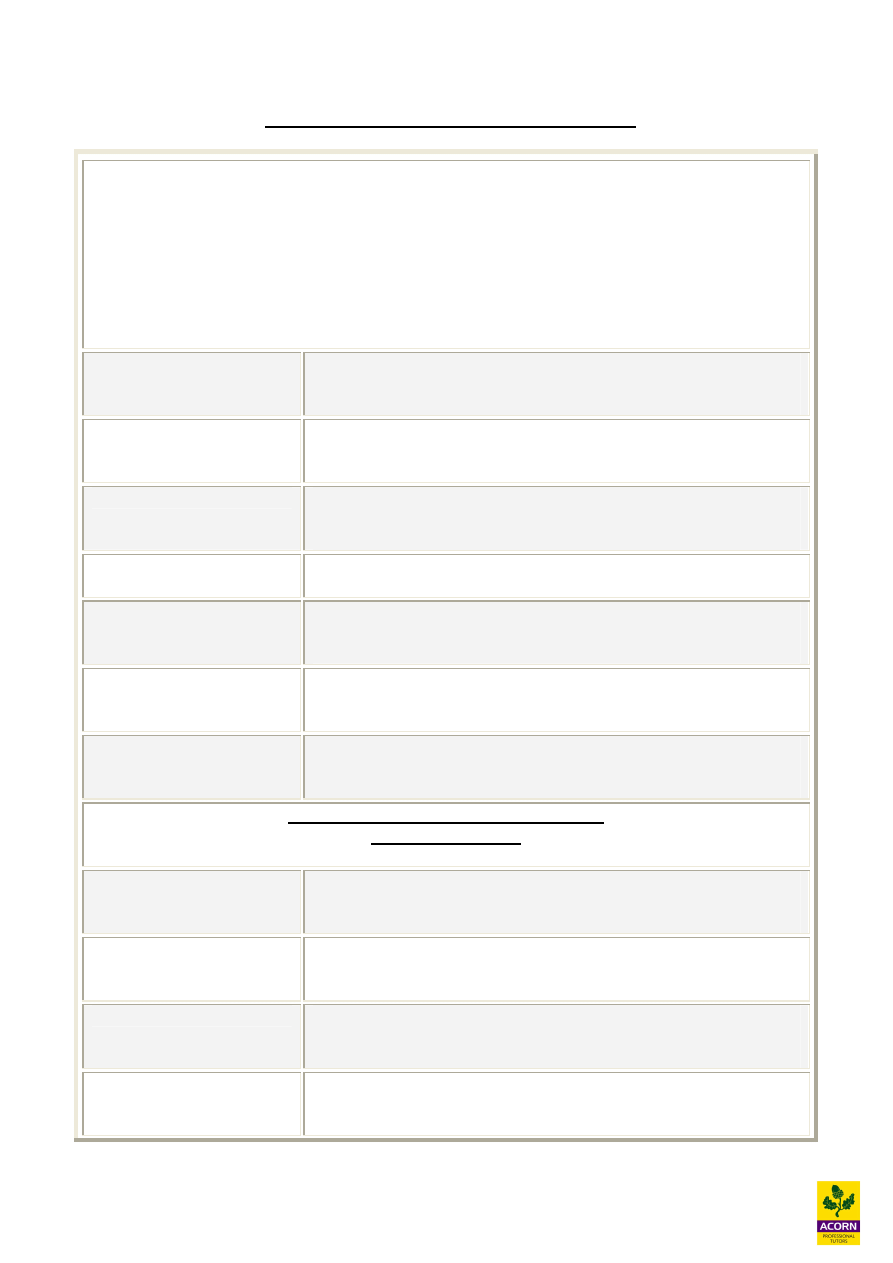
21
Summary of chapter “share capital transaction”
A limited company issues shares, which investors buy and then these investors become owners of
the company. These shares may be issued privately (ltd) or to the public (plc). Ownership in the
company is through the issue of shares. The shareholders have an equity stake in the business and
have voting rights.
Usually for large organisations the shareholders do not run the business. The directors do this.
The shareholders are entitled to dividends declared by the directors. The dividends are declared
at the discretion of the directors and depend on how much profit the company has made.
Authorised share capital
This is the number of shares that the company is allowed to issue
and is stipulated in its memorandum or articles of association.
Issued share capital
This is the number of shares that the company actually issues. This
cannot exceed the authorised share capital
Called up share capital
This is the issued share capital for which the shareholders are
required to pay to the company.
Paid up share capital
This is the amount of share capital paid up by the shareholders
Nominal value
This is the value of the each share which the company will
originally issue the shares at, (also known as face or par value)
Market value
This is the trading value of the shares, and is the price an
individual pays for the shares
Share premium
This is the increase from nominal value to market value of the
share
Procedures for new issue of equity shares
Issue and forfeiture
Application
Potential shareholders apply for shares in the company and send
cash to cover the amount applied for.
Allotment
The company allocates shares to the successful applicants and
returns cash to unsuccessful applicants.
Call
Where purchase price is payable in instalments, the company will
‘call’ for instalments on their due dates of payment
Forfeiture
If shareholders fail to pay a call, their shares may be forfeited
without the need to return the money they have paid; the forfeited
shares may then be reissued to other shareholders

22
Rights issue of ordinary shares
If a company issues ordinary shares for cash it must first offer them to its existing ordinary
shareholders in proportion to their shareholdings. This is called a rights issue because members
may obtain new shares in right of their existing holdings.
Bonus issue of ordinary shares
A bonus issue is when new shares are issued to existing shareholders but no money is received.
Instead the company capitalises its reserves, this is only permitted to the extent that the articles
permit it and the correct procedure must be observed.
Preference shares
Preference shares are issued by companies to raise finance. These shares are different from
ordinary shares. Preference shares do not give voting rights and therefore holders of preference
shares do not have a stake in the business.
Revenue reserves arise when a company makes profits and does not pay out all the profits to the
shareholders. There is no statutory requirement for a company to have any amounts in its revenue
reserve. These non-statutory reserves take various names like “retained profits”, “profit and loss
reserves”, “un-appropriated profits” etc.. A company can make dividend payments out of revenue
reserves i.e. they are distributable to the shareholders
Capital reserves must be established in certain circumstances by law. These statutory reserves
include share premium account (set up when ordinary shares issued) and revaluation reserve (set
up when fixed assets revalued). A company cannot make dividend payments out of capital
reserves, i.e. they are un-distributable
Redemption of shares
A company may decide to buy back some of its issued ordinary shares and then cancel them. For
this to happen, their must be authorisation from articles of association, special resolutions and
sometimes from the court.
Redemption of shares from capital
The accounting treatment for the redemption of shares is strict. A company must set up a “capital
redemption reserve” to protect the creditors. This is done by utilising the accumulated realised
profits (distributable reserves). The amount taken to the capital redemption reserve is the nominal
value of the shares redeemed.
Redemption of shares out of new issue of shares
If the redemption of share is financed entirely by a new issue of shares, then no capital
redemption reserve is set up as the capital is maintained.
Redemption of share out of partial new issue
If the redemption of shares is financed partly by a new issue of shares, then the amount of offset
against the new issue is also partial. A capital redemption reserve needs to be created but only to
the extent that the nominal value of shares redeemed exceed the total proceeds from the new issue
(nominal plus premium).

23
IAS 32 and IAS 39 – financial instruments
Financial instruments
Financial instruments are all instruments that are issued by companies as a means of raising
finance (capital) including shares, debentures, loans, debt instruments, options and warrants that
give the holder the right to subscribe for or obtain capital instruments. It also includes derivative
instruments such as options and futures.
The accounting standards that deal with financial instruments are:
(i)
IAS 32 financial instruments - presentation
(ii)
IAS 39 financial instruments - recognition and measurement
(iii)
IFRS 7 financial instruments – disclosures
Wyszukiwarka
Podobne podstrony:
Creation of Financial Instruments for Financing Investments in Culture Heritage and Cultural and Cre
A Cebenoyan Risk Management, capital structure and lending at banks Journal of banking & finance v
7 3 1 2 Packet Tracer Simulation Exploration of TCP and UDP Instructions
Lab 6, 10.2.2.8 Packet Tracer - DNS and DHCP Instructions
5 4 1 1 MAC and Choose Instructions
Focus S Series Hand Held and GUI Instrukcja Obsługi
kosiarka Brigs and Straton instrukcja serwisowa PL
122 Dress cutting and sewing instructions original
9302 Franzi Vest cutting and sewing instructions original
Polityka zdrowotna Health Expenditure and Financing
Check your Vocabulary for Banking and Finance
Capital Punishment and the?ath Penalty
10 2 2 8 Packet Tracer DNS and DHCP Instructions
117 Dress cutting and sewing instructions original
Guide To Budgets And Financial Management
Lab 5, 7.3.1.2 Packet Tracer Simulation - Exploration of TCP and UDP Instructions
10 2 1 8 Packet Tracer Web and Email Instructions
więcej podobnych podstron